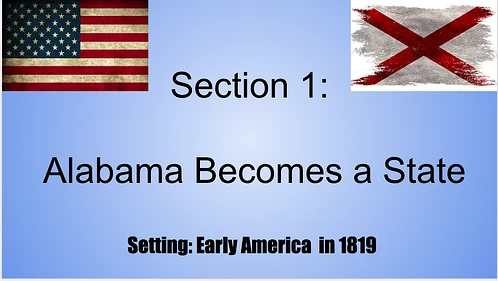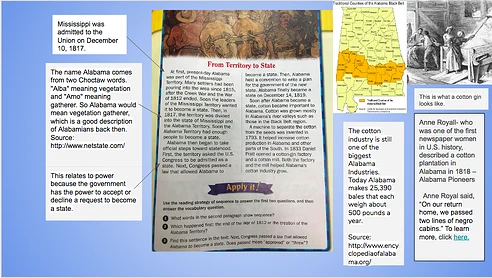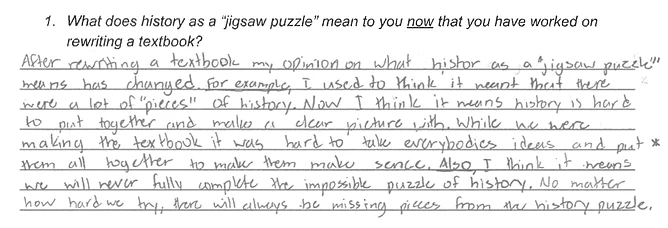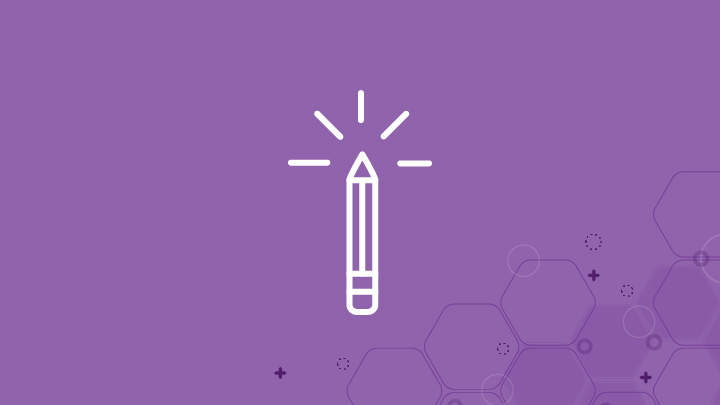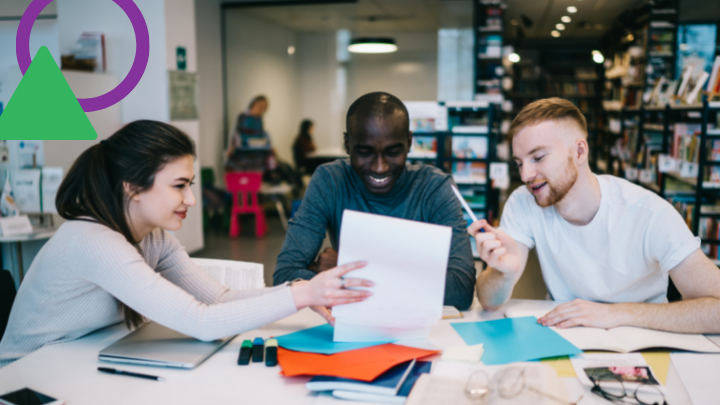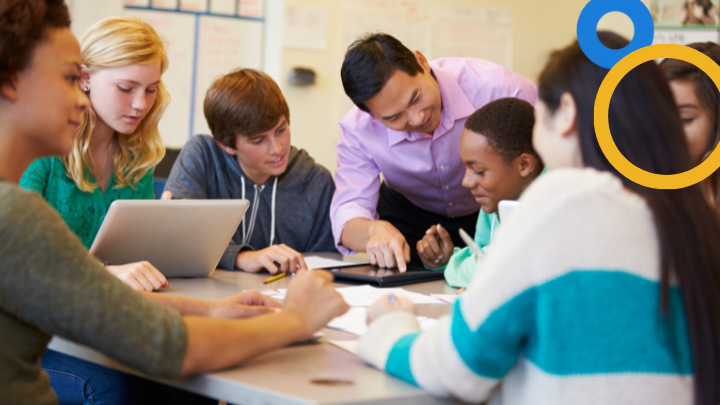In our second year working together, Liora Chessin declared she wanted her fifth graders to critically engage with history, a skill set educators sometimes reserve for high school students. For her, it was a matter of social justice. However, she wasn’t sure how her vision could come to fruition. So, during one of our bi-weekly coaching sessions, we decided her students would engage in a Project Based Learning unit that we planned out together. For the project, Liora’s students critically examined an Alabama state history textbook to uncover holes in the history being told and then worked in teams to re-write, add onto and link to sections they wanted to illuminate so that, by the end of the year, they created a comprehensive virtual textbook as a class. Throughout the project Liora stopped at key points to have students reflect on the process of creating the comprehensive textbook.
Liora’s mission was to challenge her students to question textual authority, examine author bias, and question missing perspectives. In reflection, one of her students wrote, “doing this project gave me and my classmates more power because we will get some respect [as young people]…we will feel really accomplished” and another learned, “Power impacts the way students learn history because whoever has the power can make people learn a certain way.” What follows is Liora’s reflection on the project.
Laura: When we began designing the project, what were some of the initial challenges that concerned you?
Liora: The ambiguity and newness of planning a project-based learning experience were intimidating. I knew I wanted it to be meaningful and to meet the expectations of the students. I knew I wanted them to explore how power, point of view, beliefs and money impact history. Two challenges presented themselves; time and scope. I wanted a long-term project that was substantive and would allow students to take ownership. But I wasn’t sure what they were going to take ownership over. What would I give up and what would they own? I knew the skills to assess and had a general idea of what I wanted students to do, but I couldn’t conceptualize what it could look like and you really helped me figure that out through our conversations.
Laura: What were some of the solutions we came up with to address these challenges?
Liora: One of the organic solutions built into project-based learning design is creating an authentic audience. Because of our ongoing relationship and your support as my BetterLesson coach, I took advantage of the opportunity to have you pop in throughout the project, not just at the launch or the conclusion. My students developed a relationship with me and with you as people who cared about them and their learning; they felt like their work mattered.
One of the ways I overcame the ambiguity of the final product was to invite the students into the process. When the tech tool I originally chose didn’t have the functionality we needed, you encouraged me to share that with the students and invite them into the problem-solving process. I think having you to effectively explore with me how technology could be used in service of learning, and not just for technology’s sake, taught the students and me a lot about pivoting to complete the project with integrity.
Laura: Did anything surprise you about project-based learning?
Liora: I didn’t realize how proud it would make my students to build on the questioning and independent thinking skills they had developed at the beginning of the year through their book clubs on Chains by Laurie Halse Anderson. Giving ownership to students was not new to me, but now when I reflect on the process, I am surprised by how much they were able to embrace it. I think I could have built in even more opportunities for ownership. The students really cared about what they were doing. In our virtual launch, you told them that the journey of the project was more important than the destination and the students saw that modeled in our process. In education, we can be results-oriented and, of course, every teacher want results, but the students also got to see that this was about collaborating, communicating, being creative and flexible, and reflecting.
Laura: As you share your learnings with other teachers, what suggestions do you have?
Liora: Technology can solidly promote collaboration. I had not anticipated this, but during the process, I realized you can use technology to foster collaboration and not just for research skills. And even though many teachers already know this, it is so important to remember that flexibility is key. The students learn this through the process. Although the product may not be clear to you as you go, knowing deeply the skills you want the students to develop and the skills that are meaningful to your classroom and to our world really guide the design. Lastly, don’t be afraid! Leverage the relationships around you so your students feel more supported and know that there is a wider audience for their work.
Project Conclusions
Liora’s fifth graders presented their textbook to me on their last day of school. I will never forget their maturity, their understanding of complex ideas, and their high level of self-reflection as they talked about their final product and process. In reflection, one student said, “This project makes me feel like I am actually there and in that time in history. I can imagine what it’s like. It’s fun to learn this way. You get to not only write things that will have an impact on kids but also you know that you can research and add information. You get that feeling: Wow, I actually made this!”
I was so proud of them for rising to the challenge and I am so proud of Liora for taking the risk and diving into Project Based Learning!
Laura’s Tips and Strategies to Try for Approaching Project-Based Learning:
Are you ready to try PBL in your classroom? You can learn more about BetterLesson’s approach to Project Based and Experiential Learning in this blog post and you can explore my tips (with links to BetterLesson PBL strategies) below:
Have a lot of conversations prior to beginning the project.
Try to imagine what this will look like and communicate it to someone else (a coach, a colleague, a friend) to clarify your thinking. To learn more about this type of backwards planning, explore BetterLesson’s Design Thinking Backwards Planning for Teachers strategy.
Think about how you will introduce this project to students.
With Liora, I tasked the students with creating a model student revised textbook to share with the teachers I coach. To help you think of other ideas, consult BetterLesson’s Launching Into PBL strategy.
Know your goals and objectives.
Ask yourself, “What do I want students to know and do differently?” Consider exploring BetterLesson’s Building Driving Questions strategy to learn more.
Shift to student-centered learning.
Ask your students for suggestions and feedback. Consider having your students generate their own PBL questions by exploring BetterLesson’s Student Generated Inquiry-Based Research Questions strategy. Or engage in regular conferences with students, in particular, at the middle of the project by exploring this BetterLesson strategy: PBL Midpoint Conference (available with a BetterLesson account).
Be open, reflective, and vulnerable.
You may need to adjust or pivot and that’s ok. To learn more about how to plan for a PBL task, explore BetterLesson’s Establishing a PBL Timetable strategy (available with a BetterLesson account).
Trust the process!
